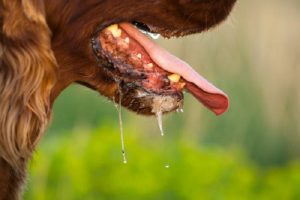Introduction:
Rabies is a particular viral lethal encephalomyelitis influencing all warm‑blooded animals (however mainly carnivores) and described by the upsetting of the nervous system bringing on impedance with the consciousness, nervous irritability, and loss of motion. All warm-blooded animals with the conceivable special case of opossums are defenseless to rabies. In any case, of all animals, the canine is the key species affected. Puppies, foxes, wolves, raccoons, mongooses, coyotes, skunks and vampire bats all can fill in as a reservoir of rabies infection. Rabies virus is a bullet shaped single-stranded RNA infection, having negative sense and nonsegmented genome.

medicalnewstoday
Transmission of Rabies Virus:
The characteristic and the most well-known strategy for transmission is through the bite of an infected animal. Transmission can likewise happen through tainting of skin wounds by fresh saliva of a contaminated animal. The saliva of an influenced animal has been appeared to be harmful a few days (the length of fourteen days) before the presence of symptoms. Air-borne transmission and transmission through ingestion, transplacental transmission and also by means of drinking water has been suspected.
Clinical Signs of Rabies:
- The clinical indications of rabies are variable
- cattle and buffalo by and large have the furious type of rabies
- The most striking signs are attacks of fits, general straining, and tenesmus, however, they rarely bite.
- Numerous cattle will strain pretty much always as though to defecate. Normally air is suctioned into the rectum when there is relaxation between the straining time frames.
- Animals with the furious form of rabies may indicate outrage toward objects in their condition or may run frantically through fences and entryways. Such conduct might be delivered by mild touch or sound.
- Salivation is seen in many yet not in all cases
- As the illness enters the paralytic stage, the main sign is the weakness in the rear legs took after by loss of motion that assumes control over the muscles of motion
- A continuous sign is knuckling over the rear fetlocks
- Death more often than not happens after a time of loss of motion and prostation.
Pre-exposure Immunization:
One ml dose of Rabisin ought to be offered by given timetable.
Minimum age:
Born of non-vaccinated dam= 4 months
Born of vaccinated dam= 9 months
Booster= Annually but depend on exposure.
